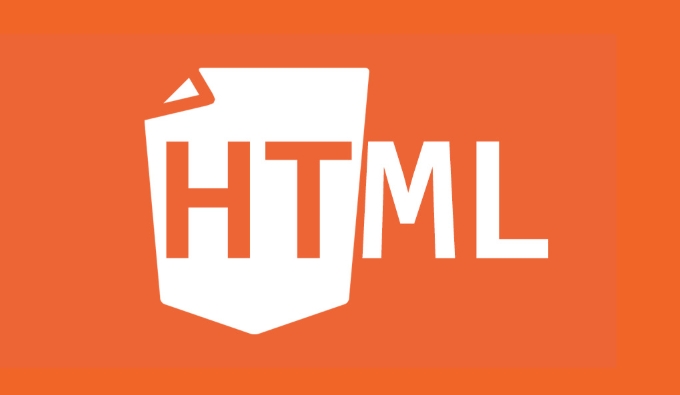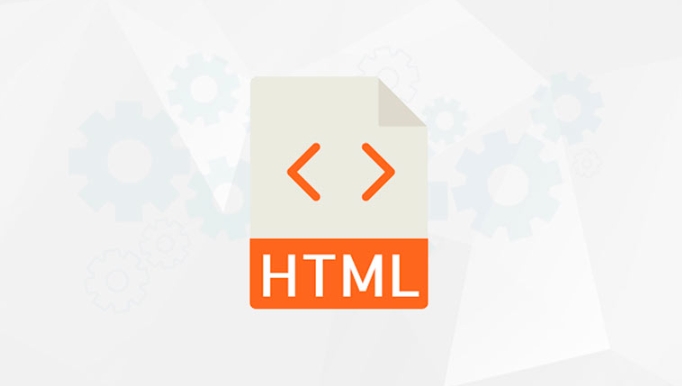How to embed content from another site using the html iframe tag?
Jul 04, 2025 am 03:17 AMUse the

In web development, if you want to embed the content of another website into your own page, the <iframe></iframe> tag is a simple and straightforward way. It's like a window that opens another page in your page.

Basic usage
The most basic way to use <iframe></iframe> is to write this tag and specify the URL you want to embed through the src attribute:

<iframe src="https://example.com"></iframe>
This way the browser will display content from example.com on the current page. By default, the iframe will have a border. If you don't want the border, you can add style="max-width:90%" to remove it.
Common settings also include width and height, such as:

<iframe src="https://example.com" width="600" style="max-width:90%" style="border:none;"></iframe>
Controls the size and responsive layout of the iframe
iframes are fixed-size by default, but responsive layouts are more popular in modern web design. You can use CSS to automatically adapt to the screens of different devices.
A common method is to use percentages to set the width, or to combine the container for responsive processing:
<div style="position:relative; padding-bottom:56.25%;">
<iframe
src="https://example.com"
style="position:absolute; top:0; left:0; width:100%; height:100%; border:none;">
</iframe>
</div>This trick uses "padding percentage" to maintain aspect ratio (such as 16:9), which is suitable for embedding content such as videos or maps.
You can also use media queries to adjust the iframe size for different screens:
- Show larger sizes on the desktop
- Reduce width or adjust proportion on mobile
Safety and compatibility considerations
Although iframes are convenient, there are some things to pay attention to:
- Cross-domain restrictions : If you are embedded with content from other websites, you usually cannot manipulate its content through JavaScript.
- Loading performance : iframes will request additional resources, which may affect the page loading speed.
- SEO impact : Search engines do not pay special attention to the content in iframes, which is not conducive to SEO.
- Security Policy : Some websites have
X-Frame-OptionsorContent-Security-Policy, which is prohibited from being embedded in iframes.
Therefore, it is best to confirm whether the target website is allowed to be nested before use. If the other party does not allow it, the iframe may appear blank or report an error.
Common uses examples
Some common iframe usage scenarios include:
- Embed maps (such as Google Maps)
- Insert third-party forms (such as Google forms, Typeform)
- Show ads or social media content (such as Twitter tweets, Facebook posts)
- Internal system integration (such as reports, dashboards)
For example, embed Google Maps:
<iframe src="https://www.google.com/maps/embed?pb=!1m18!1m12!1m3!1d3153.096837620503!2d-122.41941548468125!3d37.77492927975973!2m3!1f0!2f0!3f0!3m2!1i1024!2i768!4f13.1!3m3!1m2!1s0x8085809c8a0d0d2b:0x3e82c4da0c5ddba0!2sSan Francisco, CA!5e0!3m2!1sen!2sus!4v1614820000000!5m2!1sen!2sus" width="100%" height="450" style="border:0;" allowfullscreen=""> </iframe>
Basically that's it. iframe is a basic but practical HTML element. As long as you pay attention to how to use it, you can complete the content embedding task well.
The above is the detailed content of How to embed content from another site using the html iframe tag?. For more information, please follow other related articles on the PHP Chinese website!

Hot AI Tools

Undress AI Tool
Undress images for free

Undresser.AI Undress
AI-powered app for creating realistic nude photos

AI Clothes Remover
Online AI tool for removing clothes from photos.

Clothoff.io
AI clothes remover

Video Face Swap
Swap faces in any video effortlessly with our completely free AI face swap tool!

Hot Article

Hot Tools

Notepad++7.3.1
Easy-to-use and free code editor

SublimeText3 Chinese version
Chinese version, very easy to use

Zend Studio 13.0.1
Powerful PHP integrated development environment

Dreamweaver CS6
Visual web development tools

SublimeText3 Mac version
God-level code editing software (SublimeText3)
 The `` vs. `` in HTML
Jul 19, 2025 am 12:41 AM
The `` vs. `` in HTML
Jul 19, 2025 am 12:41 AM
It is a block-level element, used to divide large block content areas; it is an inline element, suitable for wrapping small segments of text or content fragments. The specific differences are as follows: 1. Exclusively occupy a row, width and height, inner and outer margins can be set, which are often used in layout structures such as headers, sidebars, etc.; 2. Do not wrap lines, only occupy the content width, and are used for local style control such as discoloration, bolding, etc.; 3. In terms of usage scenarios, it is suitable for the layout and structure organization of the overall area, and is used for small-scale style adjustments that do not affect the overall layout; 4. When nesting, it can contain any elements, and block-level elements should not be nested inside.
 Specifying Character Encoding for HTML Documents (UTF-8)
Jul 15, 2025 am 01:43 AM
Specifying Character Encoding for HTML Documents (UTF-8)
Jul 15, 2025 am 01:43 AM
To correctly set the character encoding of the HTML document to UTF-8, you need to follow three steps: 1. Add at the top of the HTML5 part; 2. Configure the response header Content-Type: text/html; charset=UTF-8, if Apache uses AddDefaultCharsetUTF-8, Nginx uses charsetutf-8; 3. Select the UTF-8 encoding format when saving HTML files in the editor. These three links are indispensable, otherwise it may lead to garbled page code and failure of special character parsing, affecting user experience and SEO effect. It is important to ensure that HTML declaration, server configuration and file saving are consistent.
 Essential HTML Tags for Beginners
Jul 27, 2025 am 03:45 AM
Essential HTML Tags for Beginners
Jul 27, 2025 am 03:45 AM
To get started with HTML quickly, you only need to master a few basic tags to build a web skeleton. 1. The page structure is essential, and, which is the root element, contains meta information, and is the content display area. 2. Use the title. The higher the level, the smaller the number. Use tags to segment the text to avoid skipping the level. 3. The link uses tags and matches the href attributes, and the image uses tags and contains src and alt attributes. 4. The list is divided into unordered lists and ordered lists. Each entry is represented and must be nested in the list. 5. Beginners don’t have to force memorize all tags. It is more efficient to write and check them while you are writing. Master the structure, text, links, pictures and lists to create basic web pages.
 Shadow DOM Concepts and HTML Integration
Jul 24, 2025 am 01:39 AM
Shadow DOM Concepts and HTML Integration
Jul 24, 2025 am 01:39 AM
ShadowDOM is a technology used in web component technology to create isolated DOM subtrees. 1. It allows the mount of an independent DOM structure on ordinary HTML elements, with its own styles and behaviors, and does not affect the main document; 2. Created through JavaScript, such as using the attachShadow method and setting the mode to open; 3. When used in combination with HTML, it has three major features: clear structure, style isolation and content projection (slot); 4. Notes include complex debugging, style scope control, performance overhead and framework compatibility issues. In short, ShadowDOM provides native encapsulation capabilities for building reusable and non-polluting UI components.
 Why is my image not showing up in HTML?
Jul 28, 2025 am 02:08 AM
Why is my image not showing up in HTML?
Jul 28, 2025 am 02:08 AM
Image not displayed is usually caused by a wrong file path, incorrect file name or extension, HTML syntax issues, or browser cache. 1. Make sure that the src path is consistent with the actual location of the file and use the correct relative path; 2. Check whether the file name case and extension match exactly, and verify whether the image can be loaded by directly entering the URL; 3. Check whether the img tag syntax is correct, ensure that there are no redundant characters and the alt attribute value is appropriate; 4. Try to force refresh the page, clear the cache, or use incognito mode to eliminate cache interference. Troubleshooting in this order can solve most HTML image display problems.
 HTML `style` Tag: Inline vs. Internal CSS
Jul 26, 2025 am 07:23 AM
HTML `style` Tag: Inline vs. Internal CSS
Jul 26, 2025 am 07:23 AM
The style placement method needs to be selected according to the scene. 1. Inline is suitable for temporary modification of single elements or dynamic JS control, such as the button color changes with operation; 2. Internal CSS is suitable for projects with few pages and simple structure, which is convenient for centralized management of styles, such as basic style settings of login pages; 3. Priority is given to reuse, maintenance and performance, and it is better to split external link CSS files for large projects.
 Can you put a tag inside another tag?
Jul 27, 2025 am 04:15 AM
Can you put a tag inside another tag?
Jul 27, 2025 am 04:15 AM
?Youcannotnesttagsinsideanothertagbecauseit’sinvalidHTML;browsersautomaticallyclosethefirstbeforeopeningthenext,resultinginseparateparagraphs.?Instead,useinlineelementslike,,orforstylingwithinaparagraph,orblockcontainerslikeortogroupmultipleparagraph
 Building Secure Sandboxed Iframes with JavaScript
Jul 16, 2025 am 02:33 AM
Building Secure Sandboxed Iframes with JavaScript
Jul 16, 2025 am 02:33 AM
To use JavaScript to create a secure sandbox iframe, first use the sandbox attribute of HTML to limit iframe behavior, such as prohibiting script execution, pop-up windows and form submission; secondly, by adding specific tokens such as allow-scripts to relax permissions as needed; then combine postMessage() to achieve secure cross-domain communication, while strictly verifying message sources and data; finally avoid common configuration errors, such as not verifying the source, not setting up CSP, etc., and perform security testing before going online.






